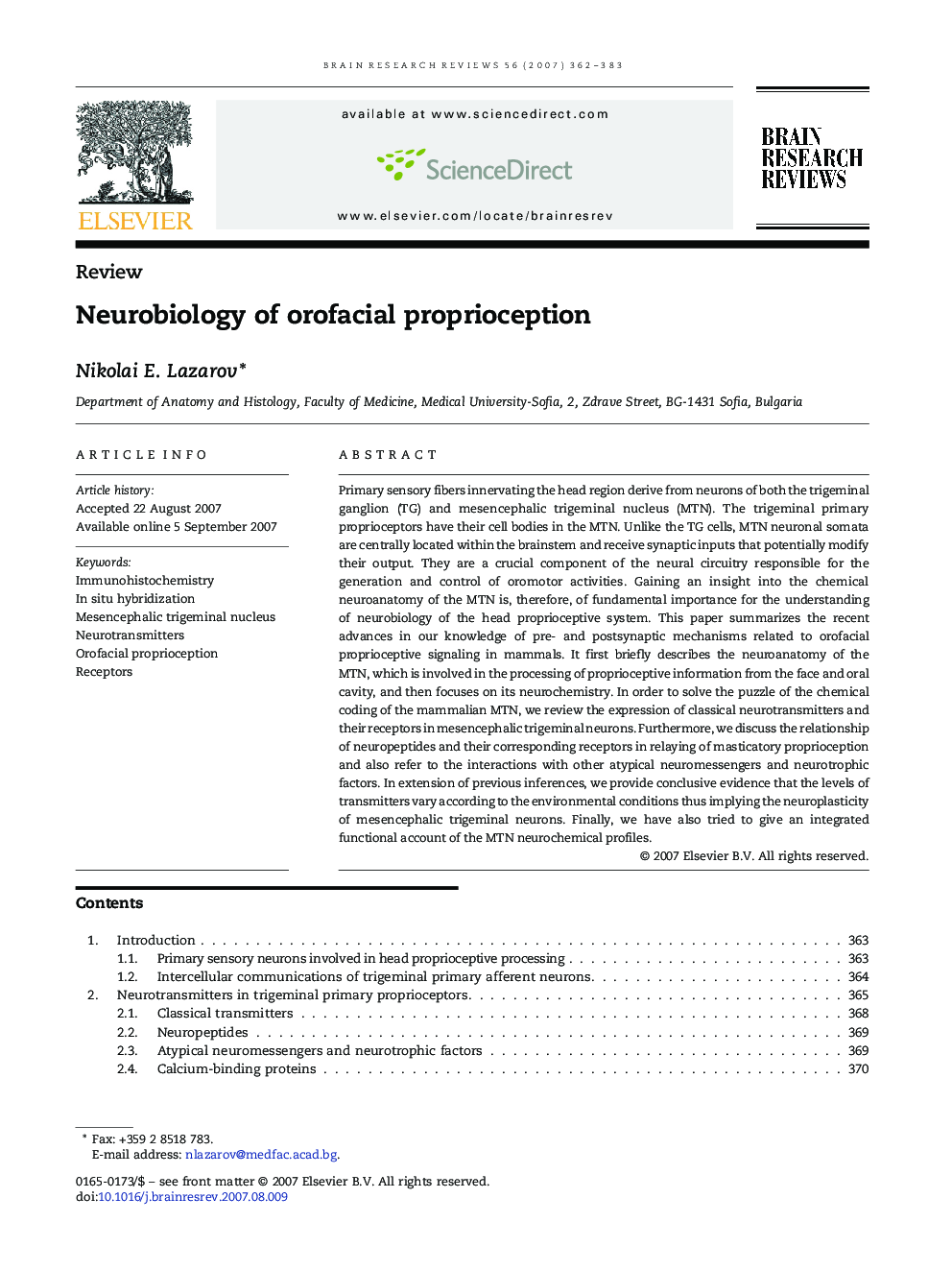| Article ID | Journal | Published Year | Pages | File Type |
|---|---|---|---|---|
| 4333997 | Brain Research Reviews | 2007 | 22 Pages |
Abstract
Primary sensory fibers innervating the head region derive from neurons of both the trigeminal ganglion (TG) and mesencephalic trigeminal nucleus (MTN). The trigeminal primary proprioceptors have their cell bodies in the MTN. Unlike the TG cells, MTN neuronal somata are centrally located within the brainstem and receive synaptic inputs that potentially modify their output. They are a crucial component of the neural circuitry responsible for the generation and control of oromotor activities. Gaining an insight into the chemical neuroanatomy of the MTN is, therefore, of fundamental importance for the understanding of neurobiology of the head proprioceptive system. This paper summarizes the recent advances in our knowledge of pre- and postsynaptic mechanisms related to orofacial proprioceptive signaling in mammals. It first briefly describes the neuroanatomy of the MTN, which is involved in the processing of proprioceptive information from the face and oral cavity, and then focuses on its neurochemistry. In order to solve the puzzle of the chemical coding of the mammalian MTN, we review the expression of classical neurotransmitters and their receptors in mesencephalic trigeminal neurons. Furthermore, we discuss the relationship of neuropeptides and their corresponding receptors in relaying of masticatory proprioception and also refer to the interactions with other atypical neuromessengers and neurotrophic factors. In extension of previous inferences, we provide conclusive evidence that the levels of transmitters vary according to the environmental conditions thus implying the neuroplasticity of mesencephalic trigeminal neurons. Finally, we have also tried to give an integrated functional account of the MTN neurochemical profiles.
Keywords
Related Topics
Life Sciences
Neuroscience
Neuroscience (General)
Authors
Nikolai E. Lazarov,
